Depending on the industry you’re in, acquiring a new customer can be anywhere from five to 25 times as expensive as simply retaining your existing customers.
That really gets to the heart of why customer retention is so important for all businesses. In this post, we’re going to take a closer look at this effective marketing strategy, including:
- What customer retention is and why it’s important.
- How to calculate customer retention rate.
- 13 customer retention strategies to earn loyalty and save money.
What is customer retention?
Customer retention is a brand’s ability to keep customers subscribed to or coming back for its products and services. That’s according to David Morneau, CEO of SEO firm Breeeze.co, who noted it also prevents customers from switching to competitors.
Why is customer retention important?
Repeat customers help ensure a steady flow of income and keep a business stable, said Sherry Morgan, founder of pet site Petsolino. And, in a perfect world, they also help grow a business through positive word-of-mouth marketing.
“Customer retention is one of the best ways to improve your profitability,” added consultant Luisa Zhou. “Many studies and surveys point to the fact that it’s far cheaper to keep a customer than to constantly try to find new ones. That’s because marketing is costly and if you can engage an existing customer so they spend more with you, your profitability increases.”
What is customer retention rate?
Customer retention rate, or CRR, is a marketing metric that determines how many customers a company retains over a given time period.
“It is one of the most important indicators of consumer loyalty,” said Jay Bats, developer of social media template firm ContentBase. “For example, if a company starts the year with ten clients and loses two by the end, it has an 80% customer retention rate.”
How do you calculate customer retention rate?
The most common formula for calculating customer retention rate is: CRR = ((E-N)/S) x 100.
According to Geoff Cudd, owner of car buying site FindTheBestCarPrice.com, E is the total number of clients you had at the end of a certain time period, N is the number of new clients you gained in this time period, and S is the number of clients you had at the start of this time period. The result is the percentage of clients who remained with you over that time.

13 customer retention strategies that work
Whether you’re a B2C business or agency looking to improve your customer retention rate, here are 13 strategies from the experts that work.
1. Provide a solid customer experience
It all starts with a good customer experience.
“In today’s competitive market, exceeding expectations, exceeding customer needs and establishing your worth are critical components of success,” said Matt Weidle, business development manager of product comparison site Buyer’s Guide. “It is critical your organization maintains customer satisfaction across all channels, including in-person and online encounters.”
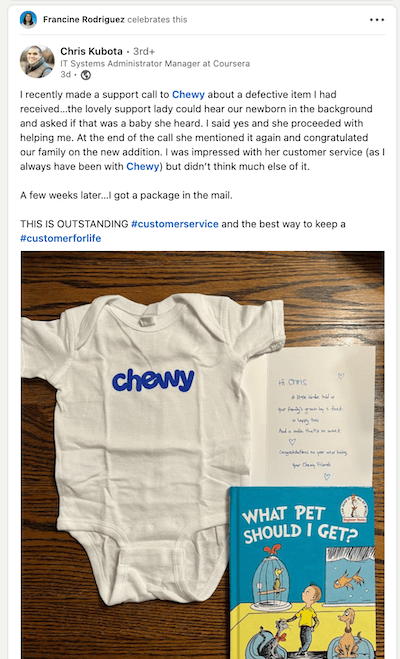
Take the case of Jeff Neal, founder of Critter Depot, who ships live insects to pet stores, zoos, and reptile owners. Retaining customers is very important because of the inherent constraints of its audience size. That’s why Critter Depot ships orders quickly, for example.
“The biggest factor is providing good service,” he added. “Sometimes the crickets or roaches will perish in route. It is imperative that we reship a new order at no cost. That one transaction may be a losing proposition for us. However, the long-term potential of retaining that customer greatly salvages the loss on that one order.”
“That one transaction may be a losing proposition for us. However, the long-term potential of retaining that customer greatly salvages the loss on that one order.” – Jeff Neal, Critter Depot
2. Under-promise & overdeliver
On a related note, it’s wise to set customer expectations early—and to always exceed them.
“Be conservative with your estimates in terms of what you’ll be able to deliver to your customers. Then, overdeliver on that promise,” Zhou said. “Always offer more value than your customer expects. That way, your services/products, no matter what your price point is, become a no-brainer for your customers.”
Ray Blakney, CEO of online language school, Live Lingua, agreed even in a highly competitive market, customers are much more likely to return if they have an exceptional experience.
3. Reward loyalty
One of the other most obvious customer retention strategies is to reward shoppers for their loyalty, such as through a loyalty program.
Rewards can include discounts, gifts, exclusive events, sneak peeks, and more.
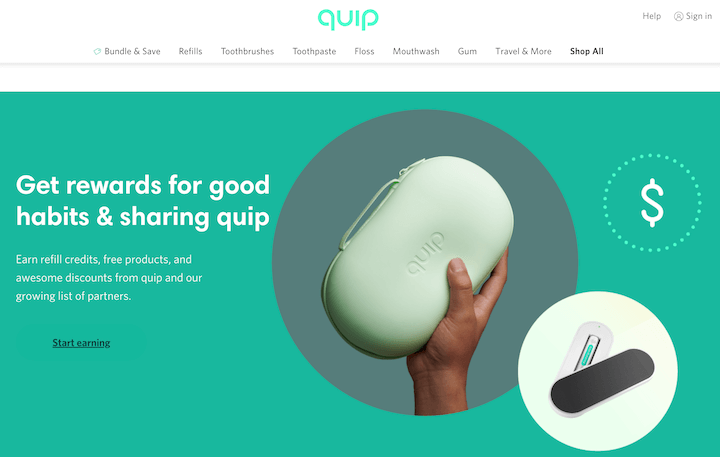
“You have the freedom to be innovative in the kind of loyalty programs you establish and the incentives you provide,” said Dustin Porreca, SEO Manager of marketing agency Elevate Demand. “The bottom line is that you want to make your returning clients feel like VIPs every time they visit your establishment. Allow them to know that they are valued and demonstrate this value via your behaviors so that they will continue to have a reason to return.”
This, Joanne King, director of online music platform ICMP, said, also paves the way for brands to cross- and upsell.
“Make your returning clients feel like VIPs every time they visit your establishment so that they will continue to have a reason to return.” -Dustin Porreca, Elevate Demand
4. Use your data to personalize the experience
Another way to enhance customer retention is by personalizing the shopping experience. But to do this, you need data.
You can collect customer insights through surveys, reviews, purchase behavior, and more, and then create profiles to execute these personalized experiences through deals or messaging.
Per Tyler Martin, business coach at ThinkTyler, Customer Intelligence Platforms (CIPs) help businesses collect, analyze, and act on customer data to develop customized offerings.
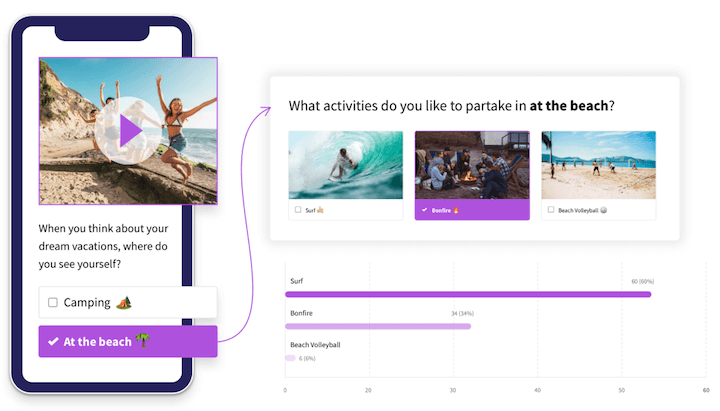
“The more information you have about your clients, the better you will be able to improve their experiences with your company,” added Jamie Opalchuk, CEO of web hosting platform HostPapa. “When you know who your consumers are, what they need and what their pain points are, you’ll be in a better position to give them exactly what they need to win their loyalty and return for more transactions with your company.”
5. Use live engagement tools
An easy way to improve the customer experience—and therefore your customer retention rate—is to respond quickly to customer feedback, questions, and requests.
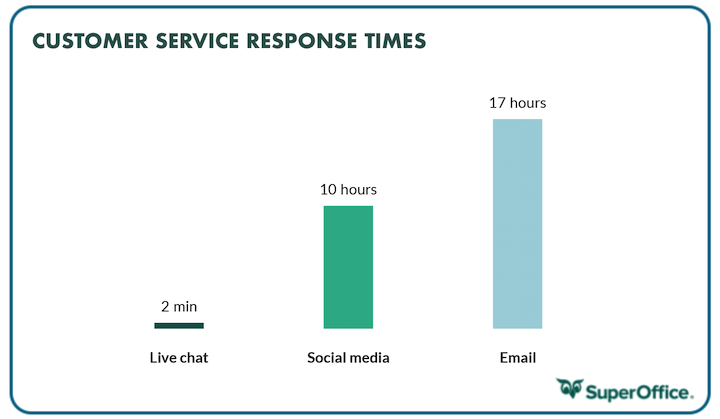
Per David Wurst, CEO of marketing and development agency Webcitz, a long response time is one of the primary reasons customers complain of a poor experience.
“Implementing live chat can be one of the most effective customer retention strategies,” he said. “Customers are 59% more likely to buy if brands respond to their questions in under a minute.”
In addition, Morgan recommends sending automated texts or emails to let customers know the average time for a response.
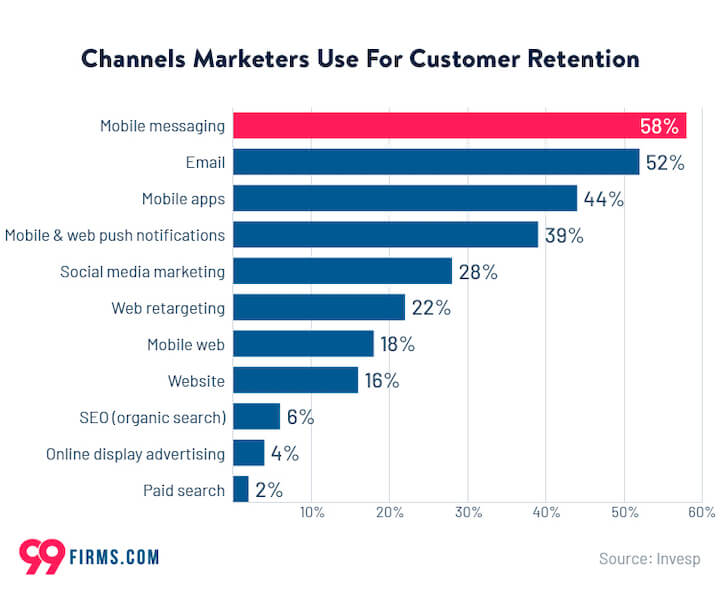
Or, Sep Niakan, managing broker of condo site Condoblackbook, noted brands can implement live engagement tools, such as video chat, so customer care teams can provide solutions on the first contact.
“The live interaction technologies cut down on client touchpoints and provide efficient responses right away,” he said.
6. Solicit feedback
Instead of waiting for customers to come with questions, comments or concerns, you can proactively solicit their opinions via feedback mechanisms like customer surveys.
Rohan Kadam, founder of the blog Biking Know How recommends online tools like SurveyMonkey to ask clients about their most recent encounters with your company. “I have seen my retention grow from 3% to 27% since using SurveyMonkey,” Kadam noted.
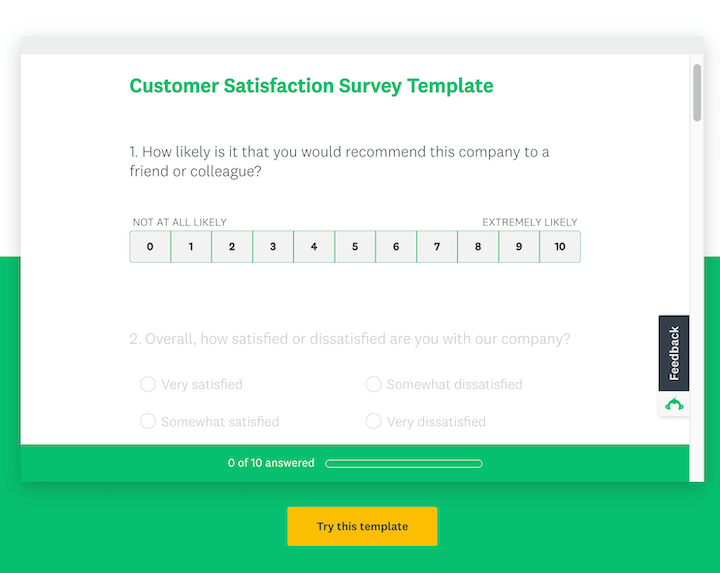
SurveyMonkey offers a survey template to help you get started.
Use these surveys to better understand what is and isn’t working in the customer experience.
“You will never be able to please every consumer on every issue, but surveys can help you find patterns that you may have overlooked,” said Matthew Paxton, founder of gaming server site Hypernia. “A good survey should include both multiple-choice questions and free text answer fields to allow customers to express themselves more extensively if necessary.”
Then, use this feedback to improve your product, service, or experience, said Matt Post, co-founder of web development service WCAG Pros, which specializes in auditing and fixing websites to make them ADA compliant.
“I have seen my retention grow from 3% to 27% since using SurveyMonkey.” -Rohan Kadam, Biking Know How
7. Listen online
Another way to proactively enhance customer retention is through social listening.
“Set up and monitor Google alerts and social mentions of your brand in the digital space [and] conduct A/B tests and surveys … to determine pain points you need to address,” said Stacey Kane, business development lead at ecommerce site EasyMerchant.
8. Monitor your retention data
And, of course, customer retention KPIs can also help businesses proactively improve customer retention. Metrics to track here include site traffic, conversions, and abandoned cart rates—as well as your customer retention rate.
This latter metric measures how loyal customers are, which is especially important in an increasingly crowded market. An ideal range is 20 to 40%, said Jason Sherman, CEO of ecommerce platform TapRm.
“You can improve your [repeat purchase rate] through customer retention strategies such as an optimized customer life cycle, loyalty programs, retargeting ads, and cart abandonment emails,” he added. “This creates a better post-purchase experience that drives customer loyalty and increases repeat sales.”
Neal noted his ecommerce website uses Shopify, which provides retention data like which consumers are returning and how many times those customers order.
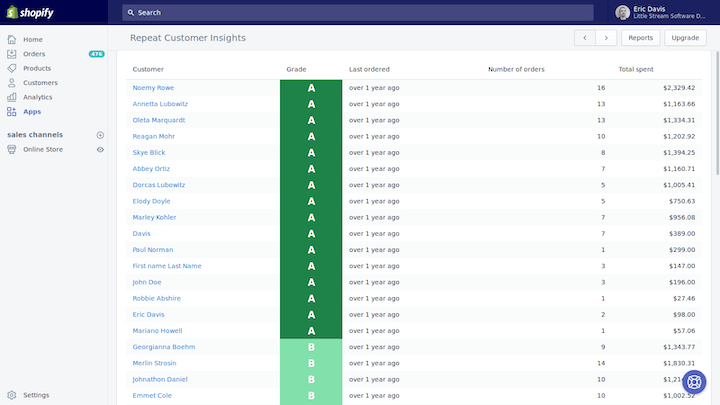
“They calculate how many of our daily/monthly orders are completed from repeat customers, which helps us know that our retention rate is growing,” he added.
9. Pay attention to churn
One specific metric to look out for is churn rate. That includes both performance-related measures, like a decrease in repeat sales or purchase frequency, as well as analyzing each touchpoint in the customer journey.
“Customer churn analysis assists stores in analyzing qualitative and quantitative signals from present clients [as well as possible new clients] in order to better understand how to keep them happy with what you’re doing—making it more likely that other consumers will follow suit,” said Rameez Usmani, CMO of Web Hosting Advices.com.
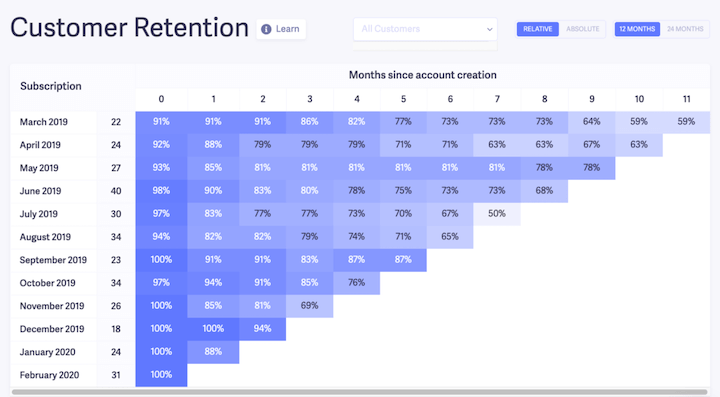
Greg Gillman, chief revenue officer of performance marketing agency MuteSix, noted once you have this model in place, you’ll start to identify patterns that will help predict the probability of churn for each customer.
“But, don’t stop there,” he said. “When you discover where you’re lagging, adjust acquisition and retention strategies until you see a boost in customer lifetime value.”
10. Make onboarding easy & enjoyable
Part of a good customer experience also requires making the onboarding process as seamless as possible.
“We do this by using auto-login for our member’s area right after the purchase,” said Mark Webster, co-founder of website builder Authority Hacker. “Rather than making the customers search through emails and enter login details manually, they are redirected to the course page, which they can use straight away.”
Paxton agreed a good onboarding process can set you up for long-term success as it makes a good first impression.
“It should be individualized [to the greatest extent possible], hands-on and aimed at removing as much friction as possible,” he said.
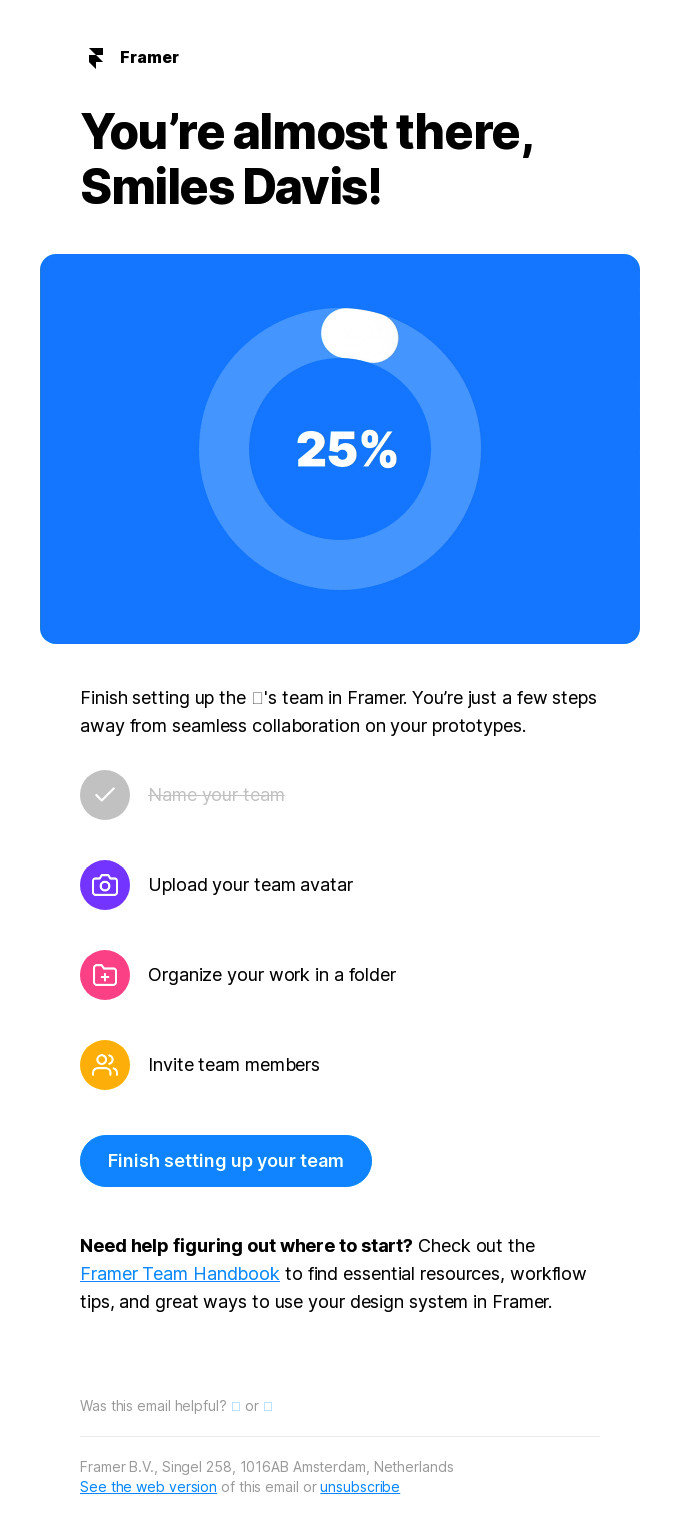
A solid onboarding or welcome email can make all the difference.
11. Be transparent
Another way to enhance customer retention is through transparency. When brands are transparent with consumers, they feel more confident in making future purchases.
“When you do this, customers know what they need to know about the brand or the product itself. And this gives them a feeling that the brand does not conceal or hide something,” said Eddie Bye, founder of supplement site Physio Flex Pro. “Overall, it is a reliable and fair customer retention strategy both parties could benefit from.”
“Transparency is a reliable and fair customer retention strategy both parties can benefit from.” -Eddie Bye, Physio Flex Pro
12. Use customer relationship management tools
The good news is you don’t have to juggle all of this alone—the right customer relationship management (CRM) platform can help make the process of retaining customers a lot easier.
“It is critical to have a consistent and high-quality dialogue with your customers,” said Steve Scott, CTO of Excel tip site Spreadsheet Planet. “Implement a CRM system in your business that helps you to maintain an optimal record of your communications with each client and to leverage this information to your advantage.”

Vishesh Raisinghani, financial expert at personal finance site PiggyBank, agreed a CRM system can better manage client interactions and help ensure effective communication no matter what the channel.
“CRM is not just the application of technology, but is a strategy to learn more about customers’ needs and behaviors in order to build stronger relationships with them,” said Adam Ng, CEO of review site Trusted. “The CRM strategy focuses on putting customer needs first and delivering a superior, more personalized customer experience. Remember one satisfied customer brings ten new customers with him whereas one dissatisfied customer takes away ten customers along with him.”
“CRM is not just the application of technology, but a strategy to learn more about customers’ needs and behaviors in order to develop stronger relationships with them.” -Adam Ng, Trusted
13. Automate where possible
Another tool to help keep customers coming back is automation. Paxton pointed to automation systems that simplify entire workflows for marketing teams, which includes re-engaging clients.
“Rather than requiring your marketing team to track which customers have expired, a marketing automation solution that combines AI and machine learning can automatically recognize when customers lapse and re-engage them with individually relevant content,” he said.
King noted this not only saves time and resources, but “it also allows you to reach out to several clients at once while maintaining relevant and customized connections.”
The 13 best customer retention strategies
To recap, here are 13 of the best customer retention strategies as determined by the experts interviewed for this post:
- Provide a solid customer experience
- Under-promise & overdeliver
- Reward loyalty
- Use your data to personalize the experience
- Live engagement tools
- Solicit feedback
- Listen online
- Monitor your retention data
- Pay attention to churn
- Make onboarding easy
- Be transparent
- Use customer relationship management tools
- Automate where possible
The post 13 Customer Retention Strategies to Earn Loyalty (& Save Money) appeared first on WordStream.

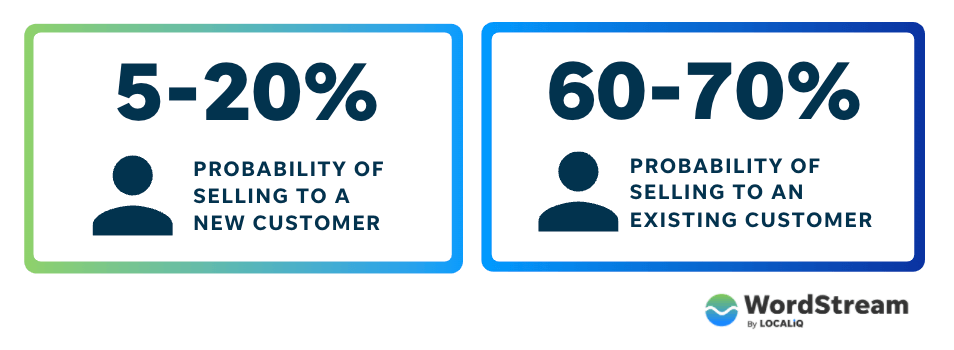




Recent Comments